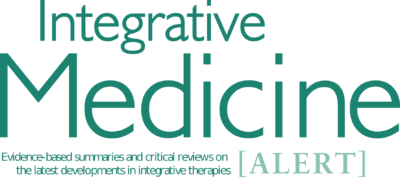
Integrative Medicine Alert – April 1, 2017
April 1, 2017
View Issues
-
Do Facebook Friends Count — for Health and Longevity?
An observational examination of California Facebook users suggested this population has a lower mortality rate than non-Facebook users; the lowest mortality risk is for Facebook users who combine a moderate degree of online social interaction with high offline social activity.
-
High-dose Biotin Shows Promise for Arresting Progressive Multiple Sclerosis Disability
In this double-blind, placebo-controlled study, patients with primary or secondary progressive multiple sclerosis were randomized to receive 100 mg of pharmaceutical-grade biotin or placebo thrice daily for 12 months. The primary endpoint of an improvement in the Expanded Disability Status Scale or a decrease in timed 25-foot walk time was achieved in 12.6% of the biotin-treated patients compared to no one in the placebo group (P = 0.005).
-
Intravenous Nutrient Therapies — Worth the Cost?
Intravenous nutrient therapies are gaining in popularity to help patients maintain overall wellness, enhance weight loss, boost immune function, increase athletic performance, cure hangovers, and treat particular conditions. However, the increase in the use of these therapies in both healthy individuals and those with health conditions has not translated into increased published research studies investigating efficacy and safety.
-
Stroke Risk From Use of Cannabis, Tobacco, and Alcohol
No associations between cannabis use in young adulthood and strokes later in life were found in multivariable models. An almost doubled risk of ischemic stroke was observed in those with cannabis use > 50 times; this risk was attenuated when adjusted for tobacco usage. Smoking ≥ 20 cigarettes per day was clearly associated both with strokes before 45 years of age and with strokes throughout the follow-up.
